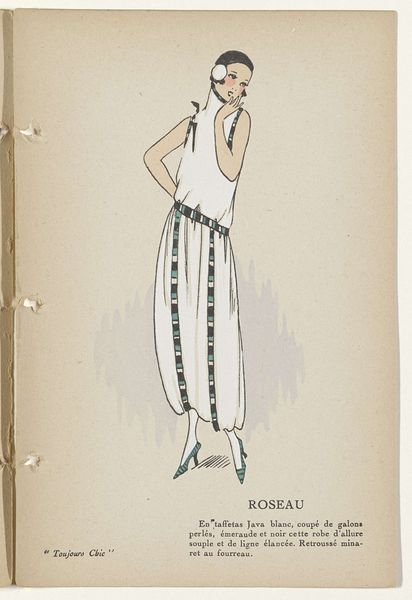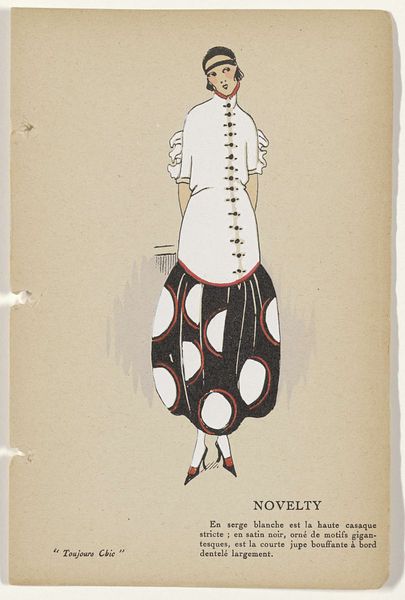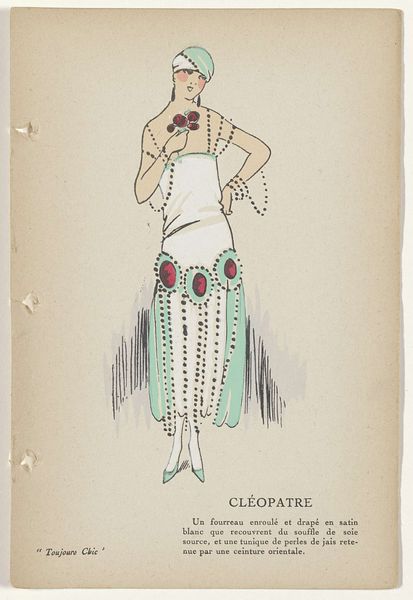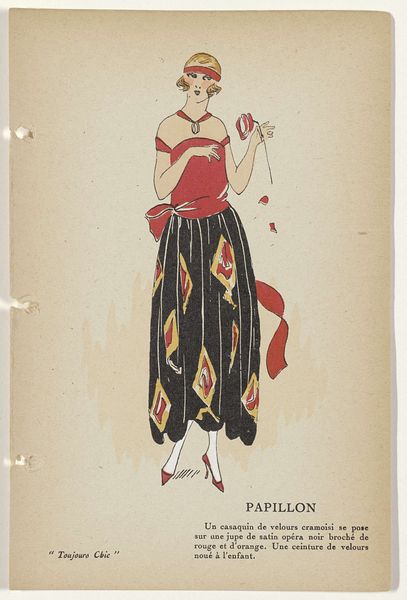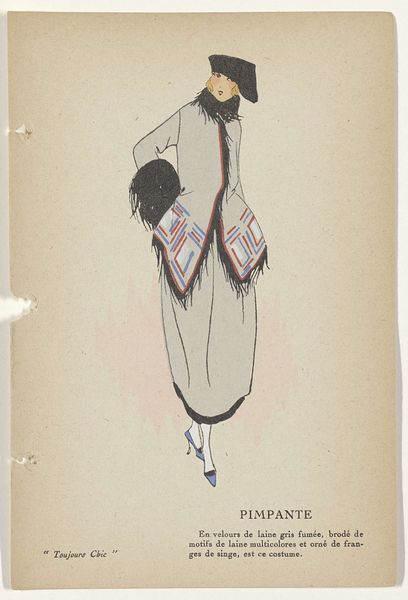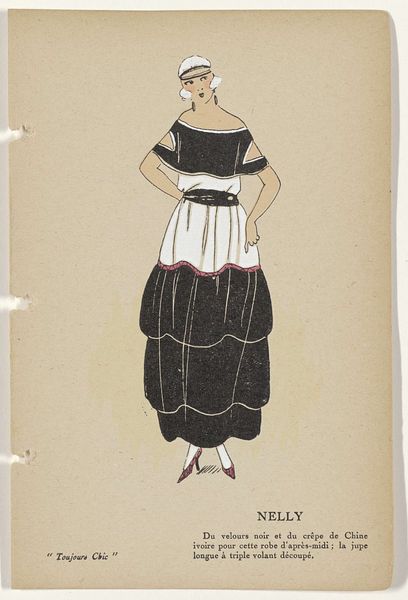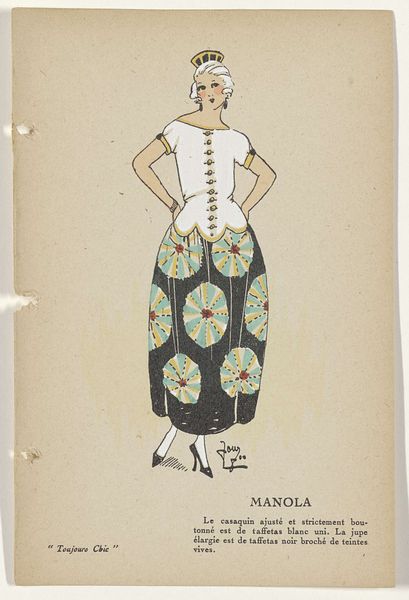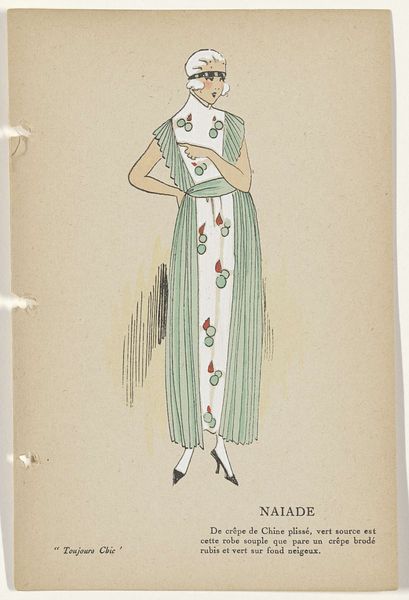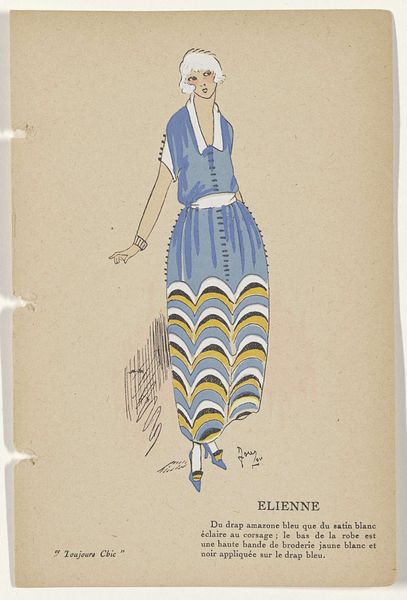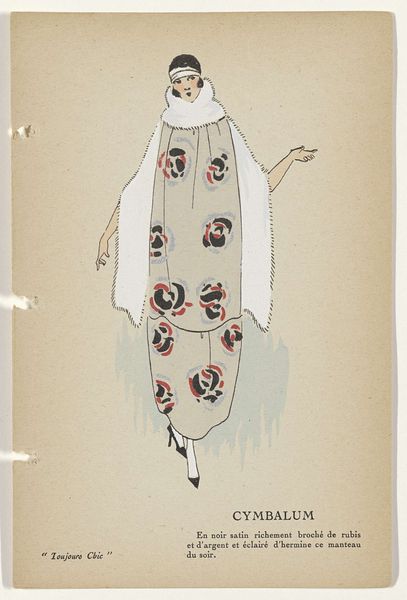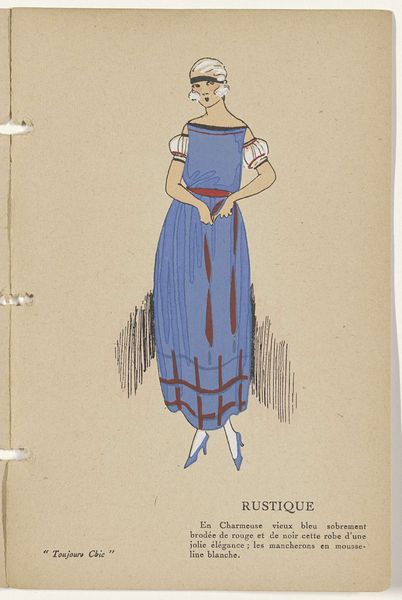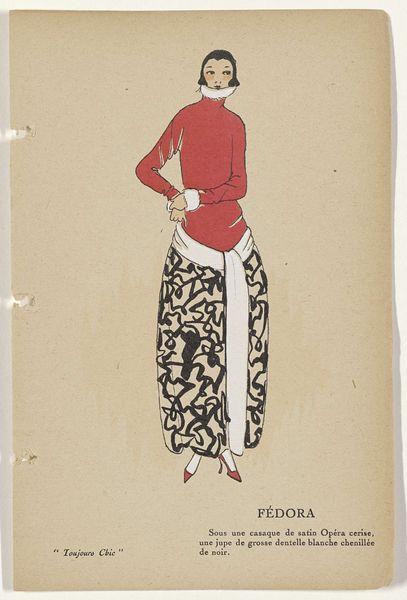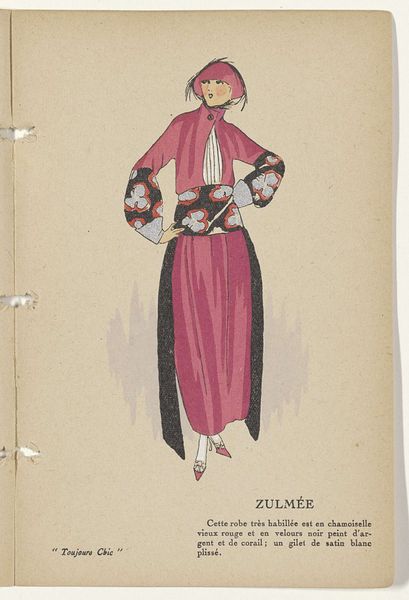
Dimensions: height 180 mm, width 120 mm
Copyright: Rijks Museum: Open Domain
Editor: Here we have "Toujours Chic Les Robes, Hiver 1921-1922: Marquise," created sometime between 1921 and 1922 by G-P. Joumard. It's a drawing with ink and watercolor that looks like a fashion plate. I find the colour palette muted, which really gives it that historical feel, but how does this drawing resonate within its cultural moment? Curator: That’s a great question. Considering the period, the illustration emerges from the tail end of the Art Nouveau movement and right into the burgeoning Art Deco era. Can you see how it sits at the cusp, retaining the flowing lines of Art Nouveau while embracing a more simplified, geometric sensibility? Editor: Yes, definitely. You can see it in the dress patterns. So, this wasn't just a depiction of clothing; it had a bigger role in society? Curator: Absolutely. These fashion plates served as a crucial form of visual communication. In an era before mass photography and widespread visual media, they informed and shaped the desires and aspirations of a growing consumer culture. Think about it: this image promotes not only a style, but an entire lifestyle, projecting ideals of feminine beauty and social status. It was very much about exclusivity and taste. Editor: That makes me wonder, were these designs truly accessible, or were they meant for a very select audience? Curator: That's the crux of the issue. While seemingly democratic as a visual medium, these illustrations primarily catered to the haute bourgeoisie. Consider the social and economic stratification of the time; the clothes represented here would be unattainable for most women. In what way does this visual strategy influence viewers? Editor: I see, so these images, while beautiful, reinforced existing social hierarchies by promoting an exclusive and often unattainable image. I hadn't thought about it that way. Thank you! Curator: Precisely! Reflecting on the interplay between art, commerce, and societal structures really opens up how we view historical works like this.
Comments
No comments
Be the first to comment and join the conversation on the ultimate creative platform.
